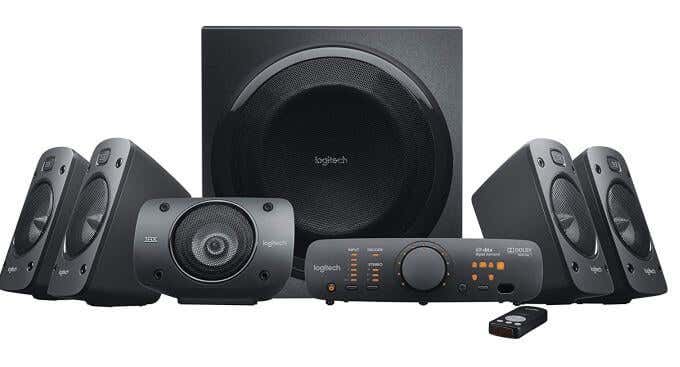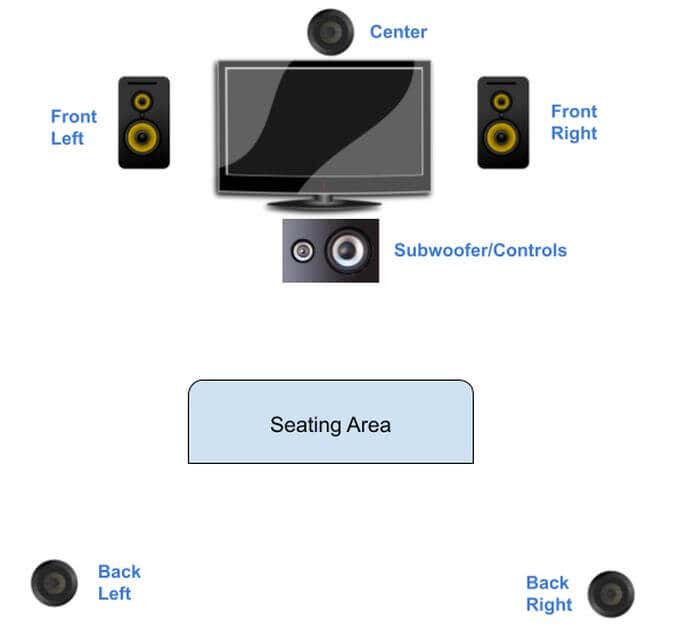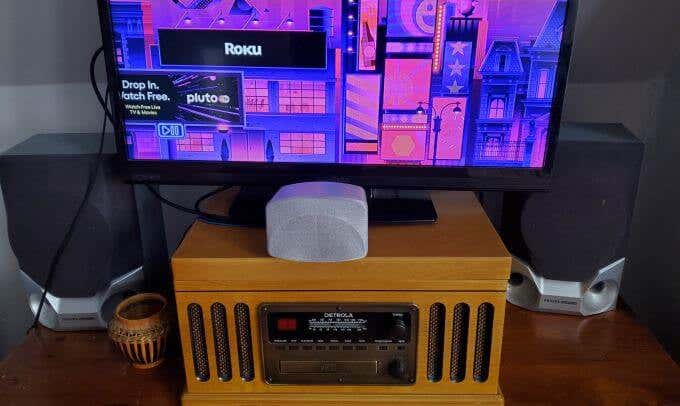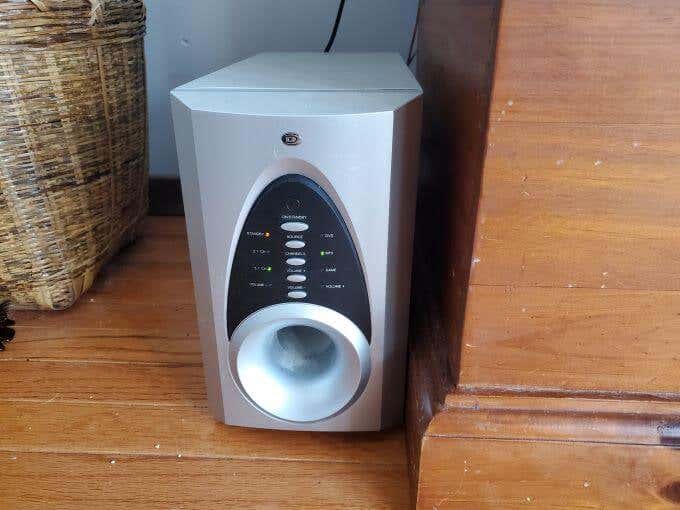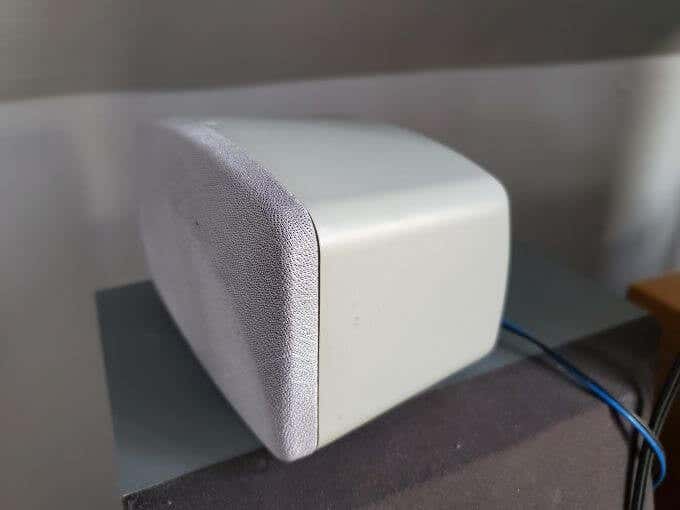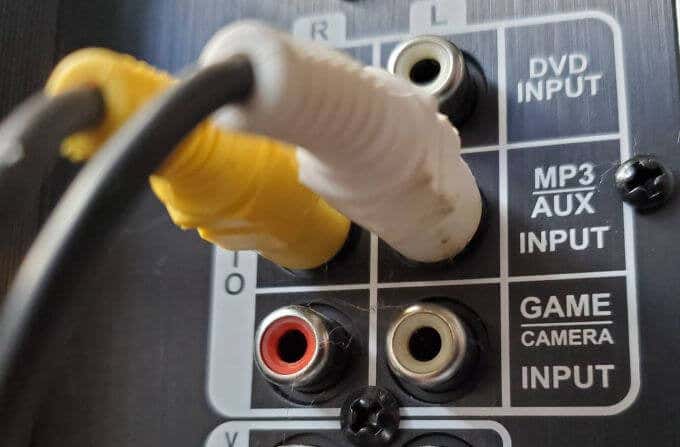The good news is that setting up a theater-quality surround-sound system isn’t really that hard. It doesn’t have to be very expensive, either. Even low-cost surround sound systems, set up correctly, can let you hear distant rain, fast cars driving in front of you, or those horror-movie knocks behind you. This quick guide will walk you through the process of what to buy and how to set up the surround sound system for the best entertainment experience you could want.
What Surround Sound System Do I Buy?
You don’t have to pay a fortune for a surround sound system. Yes, the high-end systems may give you a much clearer, high-fidelity sound. But if you’re on a tight budget, there’s no reason you shouldn’t opt for a cheaper system. As long as you can get all of the right components, and place them properly around the room, you can still enjoy an immersive entertainment experience.
Logitech Z906 5.1 Surround Sound System
One example of an excellent, middle-of-the-road system is the Logitech Z906 5.1 Surround Sound System. It is capable of handling THX, Dolby Digital, and DTS Digital entertainment. Any movie or show that offers this surround-sound content will sound amazing on this system. What you’re looking for in any system you buy are the key components you need for an immersive surround sound experience. These include:
Subwoofer (this is sometimes combined with a tweeter and control unit, although these sometimes come separately).Front Center speakerFront Right speakerFront Left speakerRear Right speakerRear Left speaker
The front speakers are sometimes combined into a single “sound bar”, depending on the system. Other brands range in price from $100 up to well over $1000. So shop within your budget. Some of the best brands to look for include:
BoseJBLRockvilleLogitechSamsungKlipsch
How to Set Up a Surround Sound System
Once your new surround sound system arrives and you’ve unpacked all of the components, you’ll need to know how to set it all up. With surround sound, placement of the speakers is everything. Use the following diagram to guide where you place the speakers. Keep in mind that the subwoofer, center speaker, and the left and right speakers are generally placed near the TV. You might consider placing the left and right speakers at the top corners of the same wall as the TV. However, since they’re on the same wall, running wires should be fairly easy. The Back Left and Back Right speakers generally require running the wires above the ceiling tiles (if you’re in a basement theater room), or down along the baseboards in a regular living room. These wires are relatively small so they should be easy enough to hide along the corners of the walls and the edges of your baseboards. Bring all wires from each speaker back to the control unit. The control unit is sometimes combined with the subwoofer. Either way, place this somewhere near the television itself.
Wiring Your Surround Sound System
On the back of the control unit, you should see 10 small, square ports – 2 per speaker. The wires are usually color coded to help you recognize where they should go. You’ll see a black strip along one wire, and the other wire is usually solid. The black striped wire goes into the port with the black tab, and the solid wire goes into the port with the tab with the matching color. Pull the tab, insert the copper end of the wire into the port, and release the tab. This will hold each speaker wire in place. Note: Some systems use component audio cables from speakers. In this case instead of inserting copper wire ends into ports, you’ll need to enter each component end into the correct port. Often this is a single white wire from the Front Left speaker, a single red wire from the Front Right Speaker, and so on. Once all speakers are connected to the control unit, you’ve just finished 90% of your surround sound system installation!
Arrange Your Front Display and Sound
Most of the major sound from your system will come from the front, just like it does in the theater. The Front Right and Front Left speakers are usually larger speakers that include some bass ports of their own. You can either hang these at the front right and left corners of your entertainment room, or just place them on the left and right sides of your television set. You can also hang the Center speaker at ceiling level directly in front of where people will be sitting in the room. Or if you don’t have a place to hang it, placing it somewhere in the front of the room (even on the same table as the TV) is fine. The subwoofer and control unit should be placed somewhere in the front of the room, preferably at floor level. Why floor level? Well, have you ever watched a movie in the theater where a massive freight train flies by and you can literally feel the vibrations of it from the floor? You reproduce effects like this by placing the subwoofer on the floor. The very low bass sounds will actually vibrate the floor itself and give everyone in the room the experience like they’re right inside the movie itself. As for the Center, Rear Right, and Rear Left speakers, these are typically much smaller units. This makes them very easy to hang at the rear corners of the room when you set up your surround sound system. These offer those amazing sounds from the sides or rear of the room that make the entertainment experience so immersive. These provide the heart of the surround sound experience. Want to feel like you’re in the middle of the rainstorm with rolling thunder, or like you’re in the middle of the crowd watching a car race? Placing these speakers correctly ensures that you get the true surround sound experience. They’re small speakers, but they pack a very powerful punch.
Connecting Audio to Your Surround Sound System
Of course, a surround sound system isn’t any good if you don’t have any sound connected to it. Mostly all TVs today have an Audio Out port that’s for this exact purpose. Many people never use them because TV sound today is pretty impressive. But if you’re looking to set up a surround sound system for a more rich and high quality sound experience, you’re going to need to look for this Audio Out port. Your surround sound system should have come with an audio wire for this purpose. Insert the audio plug end into this single audio out port on your TV. The other end of this cable is typically of the component audio type. This means a white connector for left, and a yellow or red connector for right. If you don’t see an input specifically for “Television” or “TV”, then look for an AUX input port. You may see other audio input connections for other devices on the back of your surround sound control unit. These are inputs for DVD players, game consoles, and more. Connections will follow the same approach and color scheme as the TV input described above.
Using Your New Surround Sound System
That’s all there is to set up a surround sound system. Now just plug in and turn on your TV and surround sound system. Make sure the correct audio input is selected, and crank up the volume! To truly enjoy the full capability of your surround sound system, look for shows and movies that offer THX, Dolby Digital, and DTS Digital sound content. These means those unique spatial sound elements that make it seem like things are happening around you are actually programmed into the content as it’s being filmed.

